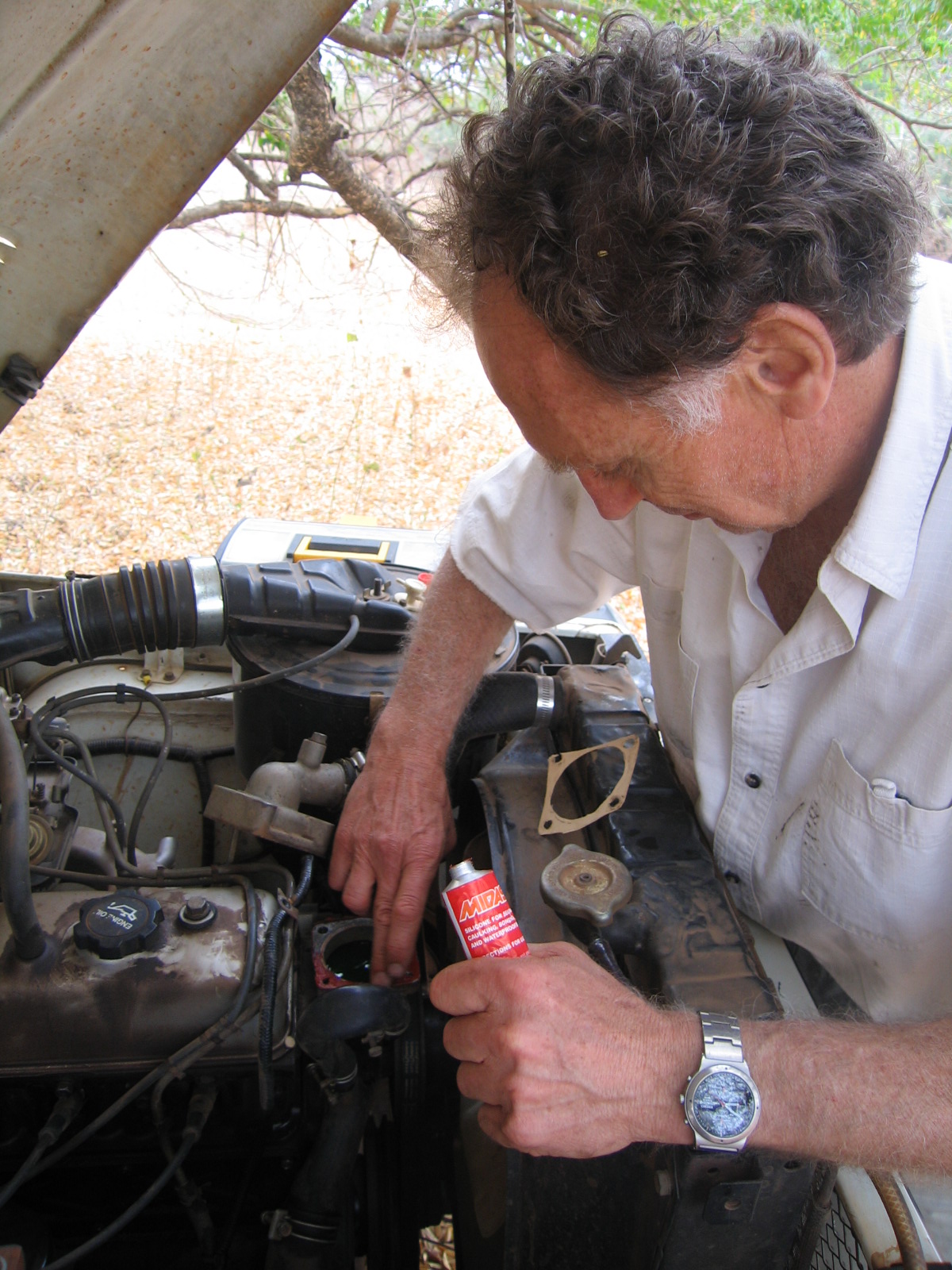When you dare deep into the great wilderness, the familiar activities and undertakings and sensations of existence change. To prevail you now need to be acutely aware of different things, like your environment and your vehicle, and you need different kinds of skills – ingenuity, resilience, and perseverance – and luck. You have to make use of what you have with you, or can find around you; stitch them together in ways that will keep you going.
Your vehicle with your equipment represents about the last of the familiar ploys, but one can take only a very small bit of your civilised world with you on it, and only basic things, with names like extra fuel, spare wheels, water, tyre levers, bush pick, shovel, axe, jack, chain, spanners, wheel pump, spare sandals; some technology, like torch, gas stove, and on the really advanced side, a compass (now turned GPS), and if you’re lucky (not me), a satellite phone…
Your vehicle has to work hard to carry you through the bush. Protecting it and being careful to check and repair anything that goes wrong is key to making it there and back. If you lose your vehicle, all other plans have to be abandoned. At the very least you then face days of walking, just to reach a rendering of civilisation too feint to be more than just quaint, and at the worst you may not make it at all.
With a reliable vehicle that had been thoroughly checked before departure, field repairs are the rare exception, but in Africa with its extreme conditions, things never work out quite as planned and if something does go wrong, you better know how to fix it. Else your situation may become very unpoetic very quickly.
In this case the vehicle started to overheat. It is very easy to overlook something like that (overheating, or low oil pressure), but one has to be super aware of the state your vehicle if your life depends on its correct functioning.
I fortunately noticed it (the overheating) in time. Overheating is of course a terminal condition for a vehicle that must work hard in the bush in extreme heat. Not fixing it almost certainly means losing the engine, and what would follow would likely be a horror experience that could end really badly.
I was able to quickly establish that the cause was the thermostat (a device that regulates the vehicle coolant flow rate through the radiator), that had gotten stuck in the closed position – years of deposit build-up, most likely.
I unbolted and opened the thermostat housing very carefully to try and save the sealing gasket, but it was stuck to the sealing faces and it was damaged anyway. So, I had to make a new one (you can see it lying on the radiator top). It would have sealed the faces adequately, but just for extra peace of mind I smeared them with a thin layer of gasket paste as well.
I did not have a spare thermostat with me – a thermostat is an unusual failure – and I decided it was not worth the risk of trying to field repair the old one and having it get stuck again. So, I left it out and closed the housing without it. Sans the thermostat the engine would run a bit cool, especially during cold conditions over early morning, but at least it would not overheat and damage anything. A new thermostat was on the list for when I got back!
Of course, I always expect to do quite a few tyre repairs if I am on very rough roads or moving through virgin bush,
In certain kinds of terrain, punctures can happen often. So, I carry at least two spare wheels, sometimes more, and I use the strongest tyres I can find – and that means the thickest, with the least chance of getting penetrated by those terrible sickle bush thorns (and many others), or getting torn on some hidden peril.
For repairs, of course, one needs the right equipment – patch and solution, tyre levers, pump (I nowadays use a little electrical plug-in one, but I always have my trusty hand pump too) – and you need to know how to get the tyre off, repaired and back on. Getting it off the rim can be a struggle. For me with my bush equipment it takes about an hour per wheel. I usually do it at midday breaks, or in the evening after my second drink (while nursing a third). But now we already had two tyres flat, so it had to be the midday stop.
Having a vehicle that is repairable under field conditions and being able to do basic repairs on it yourself is essential on these expeditions. Vehicles loaded with fancy electronics are really cool when you are close to a facility with sophisticated diagnostic devices, but out in the bush a very simple electronic component failure could mean disaster. Suffice to say that if you are not mechanically confident or your vehicle contains a lot of electronic control systems, make sure you are not the only vehicle in the travelling party…

